
The Situation
With governments, companies, and customers pushing for renewables across the globe, the transition to renewable energy sources is happening now. But grid operators are discovering that there’s a huge challenge that they must overcome to achieve a smooth transition – maintaining enough grid inertia on the renewable grid.
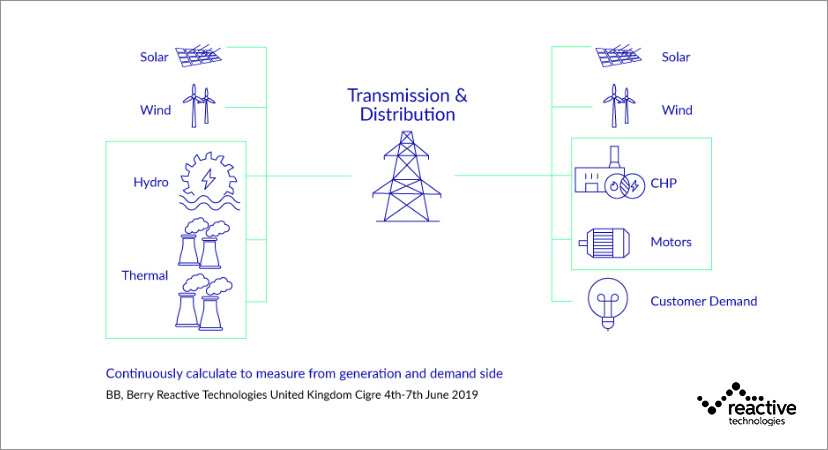
The Challenge
As with any challenge, maintaining grid inertia begins with a clear view and understanding of inertia at any given moment.
Grid operators lack an accurate, real-time view of inertia across transmission and distribution grids. Driving blind, they have no choice but to stick to the status quo and rely on fossil fuel generation to provide inertia.
Renewable energy generation will only expand to meet targeted levels if grid operators can accurately monitor grid inertia in real time.
What is inertia and how does it keep the system stable?
Traditional electrical generators such as fossil, nuclear, or hydroelectric power plants have many continuously rotating parts such as turbines and motors. Because of these moving parts, they naturally produce inertia. On a power grid, inertia is derived from hundreds or thousands of these moving parts in generators that are synchronized to the same frequency.
So what does inertia do? When riding a bike, inertia gives a person the chance to stop pedaling and coast for a few seconds without falling. This is pretty much how inertia works for a grid. If there is a power failure and a frequency drop occurs, the inertial energy reserve gives power systems a few seconds to correct themselves and stabilize the grid.
In other words, the lights stay on and the end consumer is none the wiser that a frequency drop occurred.
Without inertia, problems are unavoidable. If the grid frequency falls below a predefined level (49.5 for 50Hz grids and 59.5 for 60Hz grids in most parts of the US) and there is not enough inertia reserve on the grid, a portion of the customer load is disconnected. This results in under-frequency load shedding (UFLS), often referred to as blackouts by end consumers.
Unlike traditional fossil fuel generators, renewable energy sources don’t have naturally occurring inertia. Think of solar panels: there are no moving parts to generate inertia. It’s the same with wind turbines: although the turbines rotate, they do so at different frequencies than fossil generators. Whether a 50% or 100% renewable grid, there simply is not enough inertia generated to ensure resilience.
Without guaranteed sources of inertia to keep the grid stable, it becomes difficult – and expensive – to replace fossil-fueled generators with renewables.
This is a huge challenge for grid operators who want to make the transition to renewable energy sources.
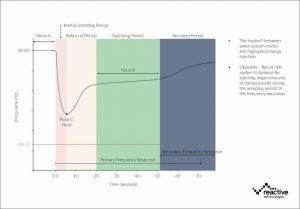
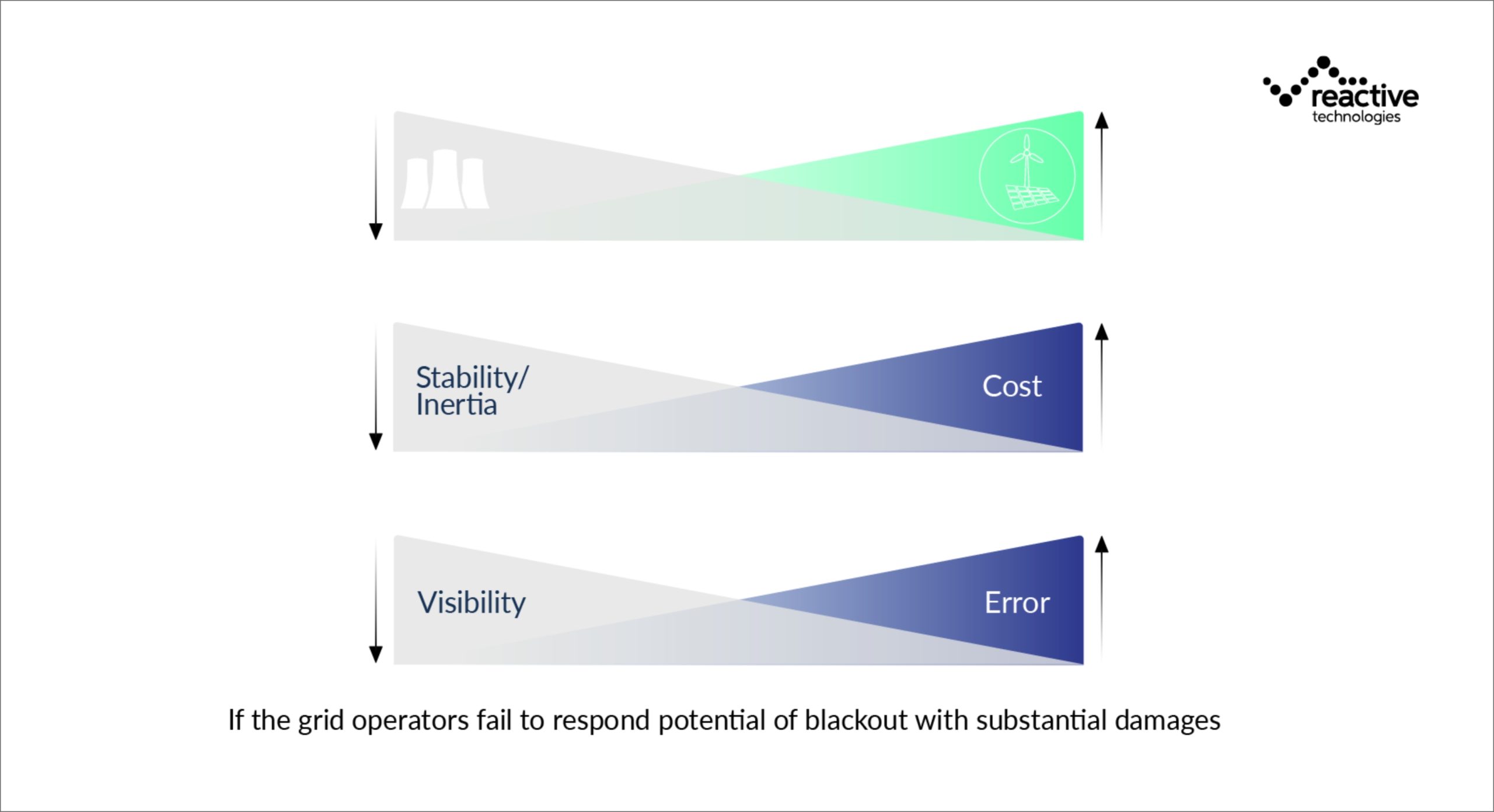
Don’t Fast Frequency Response (FFR) or batteries replace inertia?
Not completely.
When there is a drop in grid frequency on a traditional fossil fuel grid, the Primary Frequency Response (PFR) is activated. The PFR responds by increasing the power of the remaining generators to temporarily replace energy from the failed generator. However, fossil-fueled generators still rely on mechanical systems to change the supply of energy and get the frequency back to normal. These mechanical systems include increasing the flow of fuel, steam, or water to generator turbines. Inertia is in play in the few seconds it takes between the frequency drop, the detection of the frequency drop, and the mechanical response to kick in.
Unlike fossil fuel generators, renewables don’t have to rely on mechanical systems when there is a drop in frequency. So it is possible to respond to frequency drops in fractions of a second – or Fast Frequency Response (FFR). PFR can be replaced to a large extent with FFR from renewable resources.
But even with FFR, inertia is still necessary for grid stability, especially when there’s a high percentage of renewables on the grid. There are still those few fractions of a second that need to be covered by inertia so that the grid remains stable, and the lights stay on.
The Solution
Addressing the grid inertia challenge begins with accurate grid inertia measurements.
Today, most grid operators rely on estimates and models to measure inertia. They make decisions to buy large margins of stability and adjust operations based on these estimates.
An accurate inertia measurement is needed for a true picture of inertia on the grid. However, up until now, there has never been a way to measure inertia accurately.
Reactive Technologies created the ability to accurately measure inertia using a novel technique of stimulating the grid using small power pulses. These intentional power pulses – or modulation – allow small excursions of frequency to be extracted from the ‘noise’ of the system from which inertia can be frequently measured. This data is uploaded to Reactive’s platform for processing and delivers accurate grid inertia measurements. This solution is called Grid-Sonar™.

Accurate Grid Inertia Measurements with Grid-Sonar™
Reactive Technologies’ custom-built modulator alters the frequency of the power system slightly by injecting power pulses into the grid. Frequency measurement devices (XMUs) are distributed around the grid. The devices observe the minute changes in the system frequency the power pulses from the modulator create. These measurements are then sent back to Reactive’s platform for processing.
Instead of providing estimates and models like other grid monitoring tools, Grid-Sonar™ generates real-time, accurate grid inertia data. With these accurate grid inertia measurements, grid operators can reduce the risk of grid instability and blackouts more effectively and efficiently.
With accurate, real-time data on inertia, grid operators are able to plan exactly how much energy they need for inertial reserve at the lowest, most efficient cost. As a result, there is no need to buy extra large margins of energy reserve. Grid operators armed with accurate inertia measurements know what’s needed and only buy as much as they need.
Across power grids around the world, accurate grid inertia measurements will unlock more renewables on the grid by making it more cost-efficient – and safer – to run them.
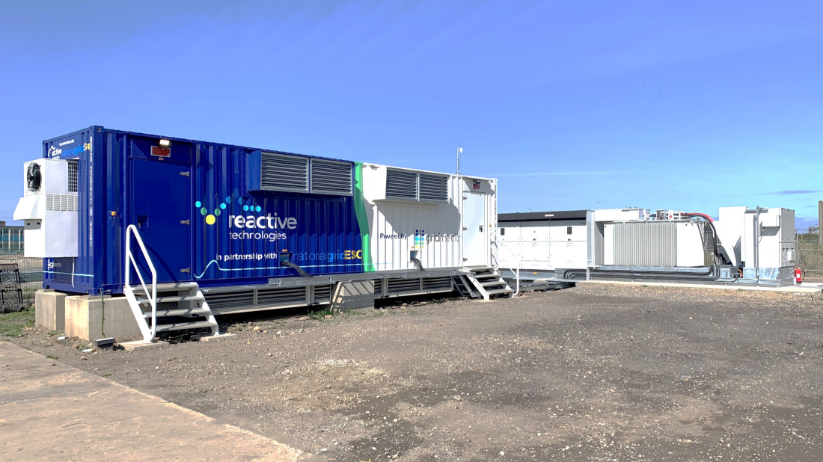
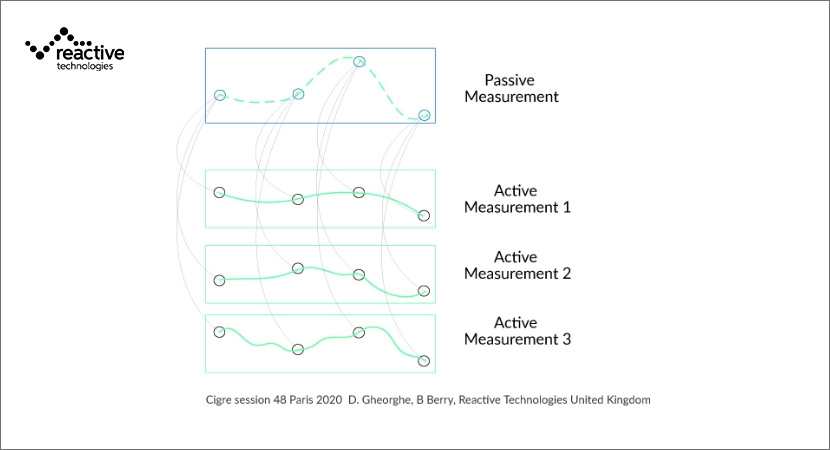
Grid-Sonar™ has proven to be accurate
The accuracy of Grid-Sonar™is validated at scale on both small and large grids around the world. This accuracy is unprecedented in the power sector. The effectiveness of Grid-Sonar™ is a giant leap forward from today’s status quo. Rather than relying on models, estimates or “effective inertia monitoring,” Grid-Sonar™ empowers grid operators with precise, real-time measurements to inform better decision-making and more effective utilization of renewable power.




